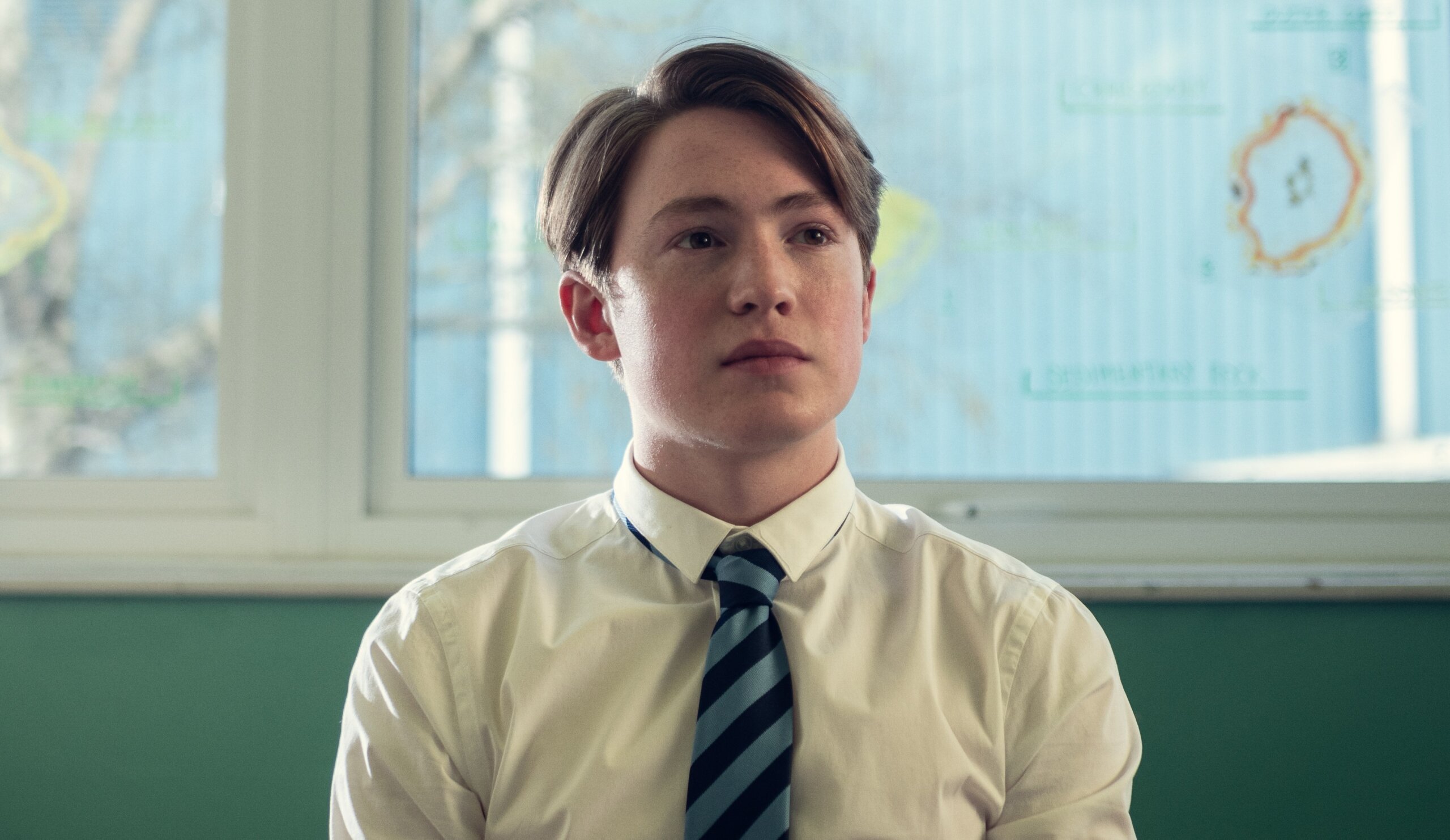Kit Connor didn’t necessarily want to come out. Not like this. On Monday, the 18-year-old Heartstopper star returned from an offline hiatus to briefly share a message to Twitter coming out as bisexual, casting something that is usually seen as celebratory in an understandably sour glow.
“back for a minute. i’m bi. congrats for forcing an 18 year old to out himself. i think some of you missed the point of the show. bye,” the British actor wrote.
His declaration came following months of relentless speculation, discussion and obsession from fans around the actor’s sexuality.
Heartstopper premiered on Netflix earlier this year as a streaming adaptation of Alice Oseman’s graphic novel of the same name. The series follows two boys in high school, Charlie (Joe Locke) and Nick (Connor) as they fall in love and navigate friendships, coming out and questions of identity. The series was praised for its sweet and warm depictions of young love— particularly the exploration of Nick’s bisexuality—and for its diverse cast of queer and trans youth.
But until now, unlike many of his castmates, Connor hadn’t publicly identified his sexuality. And many fans seemed to take issue with that absent label, particularly when images of Connor holding hands with actress Maia Reficco circulated in September with suggestions that the actor was straight playing gay—despite bisexual people who date other genders definitely being real! Connor temporarily left Twitter due to the public scrutiny and accusations that he was “queerbaiting.”
Ultimately, this entire situation shows a fundamental flaw in our cultural expectation of what makes for “good” queer representation onscreen and off, and how we still have some work to do in its understanding of identity and representation.
What does queerbaiting mean?
The notion of queerbaiting is pretty nebulous these days, with fans quick to use it in reference to everything from Harry Styles’s magazine covers to Madonna’s TikTok.
But in its origin, queerbaiting was meant to describe a marketing technique, often for a piece of media, that hinted at queer content, but didn’t actually follow through. For fellow members of my very specific generation on Tumblr, the prime example is Supernatural, a show that teased a central gay relationship between Dean and Castial, but didn’t pay off until the series’ end. Or the BBC Sherlock series that features its fair share of longing glances between Watson and Holmes, but no actual acknowledgement of anything queer going on.
But it’s a lot more complicated when we start talking about real people. Were Queer Eye stars Jonathan Van Ness and Antoni Porowski queerbaiting when they teased a new brand partnership with language and social media posts that hinted they were dating last month? Is a straight—or at least apparently straight—actor queerbaiting when they play a queer character?
To put it simply: no! A straight or straight-passing actor playing an openly queer character is not queerbaiting! It’s a whole different thing, and the fact that that term has continually been tossed around shows fans’ fundamental misunderstanding of what’s going on here. The entire situation with Connor highlights a reductive sense of identity politics when it comes to queer (or not) actors and the portrayal of queer characters. In 2022, it’s not as simple as queer actor playing queer = good, straight actor playing queer = bad.
When straight playing gay is okay
Yeah, there have been some pretty egregious examples of straight/cis (or apparently straight/cis) actors playing queer or trans characters (hi, Eddie Redmayne), but there are a slew of actors who are celebrated for playing queer despite all indications that they’re straight. Fans cheered when director Rian Johnson described Daniel Craig’s Benoit Blanc from the Knives Out films as being queer. And Cate Blanchett (who my partner described as being married to the most boring-looking man in the world) is garnering rave reviews and Oscars buzz for her climactic turn as a lesbian in Tár—just as she did a decade ago in Carol.
Those two know what they’re doing, have stated who they are and have also demonstrated a fondness and allyship to queer folks again and again (just look to Blanchett’s many interviews on the subject and Craig’s noted adoration of gay bars alongside wife and fellow frequent player of gay, Rachel Weisz).
“I will fight to the death for the right to suspend disbelief and play roles beyond my experience. I think reality television and all that that entails had an extraordinary impact, a profound impact on the way we view the creation of character,” Blanchett told the Hollywood Reporter in 2018.
Blanchett’s comments speak to the ideal world I and many others aspire to when it comes to representation in film: queer actors can play straight just as a bisexual actor can play gay or a straight actor can play bi, so long as they’re doing it right. I like to optimistically think we’ve moved past an era of queer people only getting cast (and paid) for queer roles.
But one key thing separating Criag and Blanchett from Connor is age. He’s 18. I don’t know about you, but when I was 18 I thought I was a very different person and used very different labels to describe myself than I do 10 years later. At that time in my life I leaned toward avoiding labels altogether, because I didn’t know which one quite fit.
One of the great things about the progress we’ve made as a culture in LGBTQ2S+ representation is how we don’t have to put people into neat boxes any more. Genders change. Sexualities change. The words we use to describe them and ourselves are constantly in flux. It’s an exciting time to be a young person, because ostensibly you don’t have to have all of the answers right away. You don’t have to “come out” as straight or gay or anything until you’re ready. It’s part of the reason young people are increasingly identifying as non-binary: why stick to one gender and box yourself in?
It’s the sort of utopia so many of our queer and trans ancestors who came before us have fought for. Or so it seems: what happened to Connor shows that fans haven’t moved as far forward as maybe we’ve hoped.
I ran a fandom Tumblr account for years, so I understand how important and meaningful it can feel for the person who made your favourite piece of media that reflects your identity to also reflect your identity themselves. But it’s more complicated than that, and we’ve got to remember that performers are real people—and in this case a young person just coming into adulthood with this huge spotlight on him. Give them time, give them grace and celebrate the fact that they get to figure this out on their own.
When they’re ready, they’ll tell us.


 Why you can trust Xtra
Why you can trust Xtra


